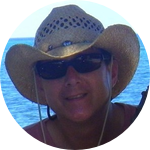About This Project
My research into ancient stone architectural ruins and construction methods is revealing that the first humans may have arrived in Chile by sea, and then migrated northward along the spine of the Americas.
I wrote about this recently in an article titled, “First Americans probably did not come from Siberia.” This path could add as much as 6,500-12,000 years to the known record of humans in the Americas. This research project funds the first phase of fieldwork to support my theory.
Ask the Scientists
Join The DiscussionWhat is the context of this research?
Since 1937, The Clovis Paradigm has been the basis of a general theory that the first humans to arrive in the Americas walked across the Bering Straits land bridge from Siberia, approximately 12,000 years ago. However, Mitochondrial DNA studies and the discovery of sites verified to be older than 12,000 years suggest humans arrived in South America much earlier. Clovis theory is based on stone tools. My methodology is based on extant ruins - engineered structures which suggest that those early arrivals to the Americas were far more advanced that the nomadic hunter-gatherers that Clovis would suggest. My research focuses on three sites of similarly constructed ruins beginning in Chile and terminating in New Mexico.
What is the significance of this project?
It is my contention that the humans that first arrived in the Americas were considerably more advanced than the primitive nomads suggested by Clovis. If they arrived in Chile they arrived by sea, which indicates they had an understanding of astronomical navigation and mathematics, which explains the complex engineering in the ancient sites in South America. By comparing the Chilean construction traditions to those found in Chaco Canyon, New Mexico, we should be able to extend the timeline for the arrival of humans in the Americas by as much as 12,500 years, and prove these ancient immigrants were an advanced civilization, not wandering nomads, and help fill another gap in our understanding of the timeline of human civilization.
What are the goals of the project?
This project is a small piece of a much larger paradigm. The goal of this project is to establish a timeline for the arrival of humans in South America by sea, and then to connect the Chilean site to Chaco Canyon through migration along the spine of the Americas. The significance of the submerged Cuban site is that it helps establish the arrival date sometime before the sea level rise at the end of the last glacial maximum, and helps us establish a potential depth at which to then locate a now submerged point of arrival for these first Americans off the Chilean coast. Once that Chilean point of origin has been established, we can chart ocean currents back to the point of origin, and corroborate the findings of the Mitochondrial DNA studies to this southerly path.
Budget
The Chilean site is remote, and difficult to travel to without guides. We could charter a helicopter to access that location more quickly, but at greater cost. Trekking could offer us the opportunity to potentially asses additional sites, as well. The Cuban site is not difficult to access, though it will require the rental of scuba gear and a day charter. The New Mexico site is on federal land, and will require permits for drone use. I can not do all the measurements alone, and thus must bring a field assistant. The LIDAR equipment will allow us to map in days what would otherwise take weeks. Additional days in Cuba afford us the opportunity to possibly examine terrestrial ruins from the same period, but we can not be assured access to the terrestrial site until we have arrived. In both Chile and Cuba we plan to employ a local "Fixer" guide/translator.
This research will cost upwards of $80,000, but successful completion of this campaign will get me well on my way.
Endorsed by
 Project Timeline
Project Timeline
Our first milestone is to make the journey to the overgrown stone ruins in Chile for first-hand analysis and investigation. Many believe these ruins to be Incan, but the Incas say they found them abandoned. The second is to compare these ruins to those on the sea floor in Cuba, and finally the third, to revisit Chaco Canyon to compare both sites to the Anasazi site protected by the NPS.
Jul 02, 2017
Project Launched
Aug 25, 2017
Travel to Chile to remote ruins site
Sep 22, 2017
Travel to submerged Cuban site
Oct 13, 2017
Travel to New Mexico Site
Meet the Team
Team Bio
My team is comprised of similarly-qualified professionals.
James Sved
I am an award-winning restoration professional having completed work to National Historic Landmarks, World Heritage Sites. I have conducted primary research on previously unknown sites of significance. I meet US Secretary of the Interior's Qualification standards (36 CFR Part 61) in architectural history, historic architecture, archaeology, historic preservation, and more. With a career spanning nearly 30 years, I have experience working successfully in the Northeast, the Mid-Atlantic, the Southeast, out West, in the Caribbean, and overseas. I earned my MA in Architectural History at the University of Virginia, and studied archaeology under Dr. William Kelso, who discovered the fort at Jamestown.
An accomplished and well-known professional, my work has been recognized by the Explorer's Club, who welcomed me as a member in 2014. A certified advanced scuba diver for more than a quarter century, I have been called, "The world's only underwater architectural historian," for my research on the 25 million square miles of dry land which, since the last glacial maximum, now reside at the bottom of our oceans.
I have been widely published.
Project Backers
- 6Backers
- 1%Funded
- $128Total Donations
- $21.33Average Donation

